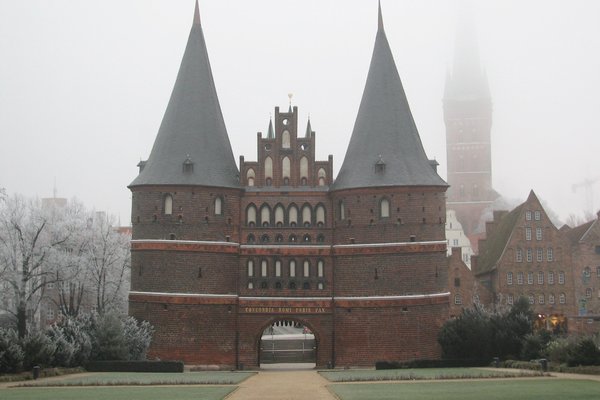Germany
Lübeck
The Hanseatic City of Lübeck represents the heritage of a leading player in the medieval Hanseatic League.
This league of merchant cities held a monopoly over the trade of the Baltic Sea and the North Sea. Lübeck’s town plan shows the strict socio-economic organization of that period. Despite serious damage during World War II, a large number of historic monuments remain such as religious buildings, salt storehouses and patrician residences.
Community Perspective: Some find that Old and New live in harmony here, while others lament the “ugly modern constructions, parked cars, cheap shops and eateries”. It’s essentially “a relatively modern city with a few patches of history still within it”. The Holstentor is its most iconic sight.
Site Info
Official Information
- Full Name
- Hanseatic City of Lübeck (ID: 272)
- Country
- Germany
- Status
-
Inscribed 1987
Site history
History of Lübeck
- 1987: Inscribed
- Inscribed
- 1983: Requested by State Party to not be examined
- Type
- Cultural
- Criteria
- iv
Links
- UNESCO
- whc.unesco.org
- Official
-
- luebeck.de — Lübeck.de
- Related
-
- museum-holstentor.de — Museum Holstentor
All Links
UNESCO.org
- whc.unesco.org — whc.unesco.org/
Official Website
- luebeck.de — Lübeck.de
Related Resources
- museum-holstentor.de — Museum Holstentor
News Article
- Aug. 12, 2021 ndr.de — Carlebach-Synagogue in Lübeck reopens
Community Information
- Community Category
- Urban landscape: Maritime
Travel Information
Recent Connections
-
Works by Thomas Pynchon
Mason & Dixon (1997): Lübeck is mention…
-
Memory of the World
Documents on the history of the Hanse (… -
Depicted in Mizielinska Maps
HolstentorSee i.pinimg.com
Connections of Lübeck
- Geography
- Trivia
-
-
On Banknotes
Holsten Tor; 50 DM; 1960 -
Depicted in Mizielinska Maps
HolstentorSee i.pinimg.com
-
On Euro coins
Holstentor on German 2006 commemorative 2 Euro -
Replica in Mini-Europe
-
- History
-
-
Hanseatic League
"Lübeck was from 1230 to 1535 one of the principal cities of the Hanseatic League" (OUV) -
Located in a Former Capital
Capital of the Hanseatic League 1361-1535
-
- Architecture
-
-
Brick architecture
-
Gothic
Saint Mary's Church -
Designed by Hans Hendrik van Paesschen
City Hall -
Expressionist architecture
St. Catherine's Church in Lübeck dates from the early 14th centry, but its brick facade was decorated with expressionist clinker brick sculptures by Ernst Barlach and Gerhard Marcks in the 20th century. "A striking feature of Brick Expressionism is the liveliness of its facades, achieved purely through the deliberate setting of bricks in patterns. ...The facade designs were enhanced by the use of architectural sculpture, made of clinker bricks or ceramics. Ernst Barlach also created clinker statues, such as the frieze Gemeinschaft der Heiligen ("community of saints") on St. Catherine's in Lübeck (completed by Gerhard Marcks)."See en.wikipedia.org
-
Star fort
See en.wikipedia.org
-
- Damaged
-
-
Damaged in World War II
During World War II (1939–1945), Lübeck became the first German city to suffer substantial Royal Air Force (RAF) bombing. The attack of 28 March 1942 created a firestorm that caused severe damage to the historic centre. This raid destroyed three of the main churches and large parts of the built-up area; the bells of St Marienkircke plunged to the stone floor. (wiki)
-
- World Heritage Process
-
-
Inscribed on a single criterion only
iv. to be an outstanding example of a type of building, architectural or technological ensemble or landscape which illustrates (a) significant stage(s) in human history
-
- Religion and Belief
-
-
Dance of Death
St. Mary's Church: originally a 15th century painting was displayed here, nowadays stained glass windows with the theme -
Dominican Order
Burgkloster -
Jewish religion and culture
historic synagogue next to St.-Anne-Kloster -
Nunneries
St-Anne-Kloster -
Benedictines
St.-Johannis-Kloster -
Franciscan Order
Katharinenkloster -
Augustinian Order
St.-Anne-Kloster
-
- Human Activity
-
-
Significant masonic lodges
LogenhausSee de.wikipedia.org
-
Salt
Salt storehouses -
Invention of sweets and pastries
Lübeck Marzipan: "in the 18th century, the marzipan produced in Lübeck started becoming well known for its high quality, due to its high almond content." The early confectionaries were located at Lübeck market square (wiki de)See de.wikipedia.org
-
Sea Ports
-
- Constructions
-
-
Leaning Tower
Holsentor -
Horse Stables
next to Burgtor -
Historic Pharmacies
at St. Anne Convent -
Hospitals
Heiligen Geist HospitalSee de.wikipedia.org
-
Astronomical clocks
The astronomical clock of St. Mary's Church, constructed 1561–1566, was destroyed in the bombing of Lübeck in 1942. The present clock is a replacement by Paul Behrens, installed in 1967. (wiki) -
Notable Bridges
Puppenbrücke -
Music Academies
-
Historical Organs
Arp Scnitzger's famous organ at the cathedral was lost in WWII and reconstructed since. -
Granaries
ZeughausSee www.luebeck.de
-
Prison
The Burgkloster served as a prison in during the first half of the 20th century.
-
- WHS on Other Lists
-
-
European Route of Brick Gothic
-
Memory of the World
Documents on the history of the Hanse (Inscribed 2023)
-
- Timeline
-
-
Built in the 13th century
capital and Queen City of the Hanseatic League from 1230 to 1535 & Burgkloster (1227)
-
- WHS Hotspots
- Literature & Film
-
-
Works by Nobel Prize winning authors
Thomas Mann (1929) - Buddenbrooks -
Works by Thomas Pynchon
Mason & Dixon (1997): Lübeck is mentioned in the novel, though not necessarily with the geographical detail of other sites.
-
Location for a classic movie
The Salzspeicher in Nosferatu (1922, "One of the silent era's most influential masterpieces")See www.imdb.com
-
News
- ndr.de 08/12/2021
- Carlebach-Synagogue in Lübeck reop…
Recent Visitors
Visitors of Lübeck
- Adrian Turtschi
- aj
- Alberto Rodriguez Gutierrez
- Alexander Barabanov
- Alexander Lehmann
- A. Mehmet Haksever
- Ammon Watkins
- Ana Lozano
- Ansitong
- Argo
- ArnaudFilloux
- AS
- Ask Gudmundsen
- Aspasia
- Assif
- Astraftis
- a.thum
- Atila Ege
- AYB
- BaziFettehenne
- Bill Maurmann
- Bin
- Bodil Ankerly
- Bram de Bruin
- Brendan Carroll
- Bropyk
- Bruno_Pires
- butterflybird
- c82wc1
- Can SARICA
- Carlos Sotelo
- Caspar
- Cezar Grozavu
- chenqtao
- Cheryl
- CherylKla
- Chole Ross
- Christer Sundberg
- Christian Wagner
- Christine
- christof
- Christoph
- Christravelblog
- Claire Bradshaw
- ClaraHH
- Clyde
- Colossus
- Corinne Vail
- Csaba Nováczky
- ctravel
- CugelVance
- Dagmara
- Daniel Chazad
- Daniel Gabi
- Danieljbromberg
- David Berlanda
- Dimitar Krastev
- Dimitrios Polychronopoulos
- Dirk-pieter
- Don Irwin
- Dorejd
- Echwel
- Elia Vettorato
- Elis
- Ellen Nielsen
- Els Slots
- emvcaest
- erdsaumnaht
- Erik Jelinek
- Errol Neo
- Eva Kisgyorgy
- Evgenii
- Fan Yibo
- Farinelli
- Federico P.
- Feldhase
- Femke Roos
- Fernweh
- FK
- Flexiear
- Folkokovic
- Frederik Dawson
- frizzle
- FS
- Galgalula
- Garry Jackson
- Gary Arndt
- gautamiyer23
- George Gdanski
- GeorgeIng61
- GerhardM
- Gernot
- Gilles
- Grendel Gongan
- grimloch
- Harald T.
- Harry Mitsidis
- henrik_hannfors
- heywhatever2
- Hubert
- Iain Jackson
- Ian Cade
- Ingemar Eriksson
- Ingrid
- Ivan Rucek
- Jaakkotoivanen
- Jacob Choi
- Jacob Otten
- Jakob F.
- Jana and Matt
- janem
- Janina Lehmann
- Janos
- Jan-Willem
- Jan Zimmermann
- Jarek Pokrzywnicki
- Jasam
- Javier Coro
- Jean Lecaillon
- Jesse S 2010
- Jezza
- Joel on the Road
- John Smaranda
- Jonas Hagung
- Jonas Kremer
- Jonas Martinsson
- Jon Bauer
- Jon Opol
- JoshHad
- Joyce van Soest
- JR's HERITAGE SITES
- Judit Andrea Juhász
- jxrocky
- KarenBMoore
- Kasia M.
- Kasper
- Kbecq
- Ken DJ
- Kerékgyártó
- Kevin247
- Knut
- ko9757
- KoenigMarke
- Krijn
- Kristin
- krtek
- Kurt Lauer
- kutasp
- Lara Adler
- Laurey
- lichia
- Ligocsicnarf
- Lisu Marian
- Lithobates
- Loic Pedras
- Luboang
- Lucio
- Luis Filipe Gaspar
- Lukasz Palczewski
- Maciej Gil
- Mahuhe
- Malgorzata Kopczynska
- Małgosia Łupicka
- Manuelfunk
- Martin
- Martina Rúčková
- Matthewsharris
- Max
- MaxHeAnouBen
- MaYumin
- MH
- Michaela0705
- Michael Ayers
- MichaelH
- Michael Novins
- michaelsballard
- Michael Turtle
- Mikko
- Mikko Syrjä
- Milan Jirasek
- Miloš Tašković
- Ming_9734
- MMM
- Morodhi
- Mozzer76
- Mtlmr
- Nafis N
- nan
- Nasebaer
- Nicole Lampos
- Nihal Ege
- nikolasruffet
- NoahFranc
- Nuria8
- Olli-Pekka Turunen
- opperpco3
- PabloNorte
- Patrik
- Patrik_globe
- Paul Schofield
- Peltzi
- PeterA
- PeterH
- Peter Lööv
- Petteri
- Philipp Leu
- Philipp Peterer
- PlacesWeHaveBeenTo
- Porcho
- Potsdamer
- pressdm
- Purrfect
- Rafał Kałczuga
- Ralf Regele
- Randi Thomsen
- Reiseblitz
- Reiseblog
- Reisedachs
- Reza
- Rick Ohm
- RobRos
- Rodinia
- Roger Enarsson
- Roger Ourset
- Roman Bruehwiler
- Roman Raab
- Ronbon
- Rudegirl
- Sandmann15
- Sandra!
- Schnitzel
- Sebasfhb
- Sehnsuchtsbummler
- serghei.belous
- Sergio Arjona
- Shandos Cleaver
- Shijie ZHU
- shoaibmnagi
- Simonf
- Simonh
- SirLoydd
- Solivagant
- Stanislaw Warwas
- Stefan A. Michelfeit
- Stefan Loov
- Stijn
- Sturuss
- Svein Elias
- Szabolcs Mosonyi
- Szucs Tamas
- Tamara Ratz
- Taotao Chen
- Tarquinio_Superbo
- Tcchang0825
- Thomas Buechler
- Thomas van der Walt
- Thorben
- Timonator
- tingmelvin
- Tom Flaten
- tony0001
- tquist24
- triath
- Truls Brekke
- Tsunami
- usagi1974
- Valentina
- ValiaVeweth
- Vanessa Buechler
- Veronica
- viktor_balandin
- VLabhard
- WalGra
- Walter
- Westwards
- WILLIAM RICH
- Wojciech Fedoruk
- Wo_ko
- Xiquinho Silva
- YaroMir
- Yevhen Ivanovych
- Zoë Sheng
- Zos M
- Zsuzsanna Forray
Community Reviews
Show full reviews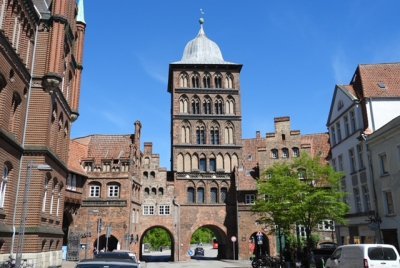
Visit date(s): May 8 & 9, 2025
Nearby sites on trip: Over 2 weeks: Frontiers of the Roman Empire, German Limes; Bamberg; Potsdam; Primeval Beech Forests, Serrahn; Stralsund and Wismar; Green Belt (T), Schaalsee; Schwerin Residence Ensemble; Berlin Modernism Housing Estates, Wohnstadt Carl Legien; Museumsinsel.
Overnight location: in the old city area, but not within a core zone
Location(s): Walked around each section of the core zone, entered some of the churches.
Zone 1: Burgtor (photo), Burgkloster, Schiffergesellschaft, Jacobikirche, Heiligen Geist Hospital, Füchtingshof, Katharinenkirche
Zone 2: Holstentor, Salzspeicher, Petrikirche, Dom
Zone 3: Marienkirche, Rathaus, Marktplatz
Travel method(s): car, foot within core zone
Travel duration: Over an hour from Neuklostersee and to Schwerin
Visit duration: 1.5 days
OUV: There is certainly a wide variety of buildings from the Hanseatic period that have been well preserved. The old area is a similar size to those of Stralsund and Wismar, despite the war losses. The feel is a little grander than the other two, with the Holstentor and city planning. Overall, it is a worthy site.
Interestingly, there is a 19th century synagogue next to the Museumsquartier St. Annen, that survived the war (although damaged) and is now in use again.
Best of: Holstentor and the Marienkirche, Rathaus and Markt area were the most impressive (as long as one faces the right direction).
Worst of: The location of the modern shopping centre entrance makes it almost impossible to get a …
Keep reading 0 comments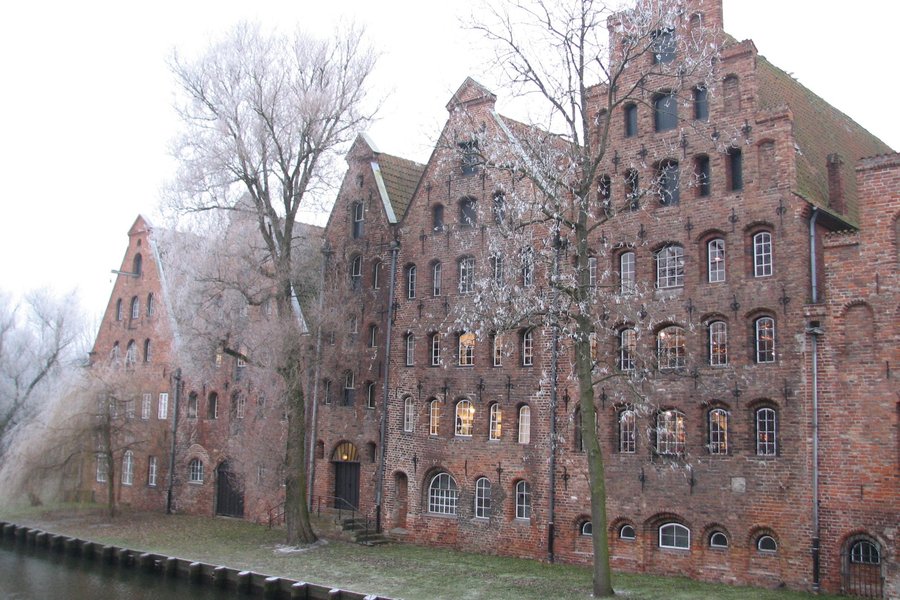
We visited Lübeck in September 2024.
Lübeck is an old venerable Hanseatic city. But Lübeck is not just a city with a lot of history, brick art and many impressive churches. Lübeck is also a city with a lot of lively life, streets with beautiful renovated houses and many attractive shops (Marzipan too of course).
The Holster Tor is certainly a highlight and a hike along the harbor is simply lovely.
It´s not a modern city with just a few patches of history.
I have seen also Wismar and Stralsund but Lübeck clearly is the queen of the Hanseatic cities.
Keep reading 0 comments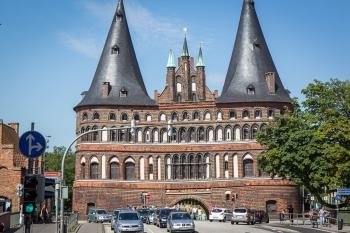
I was a bit surprised that Lubeck wasn't included as a single site with Wismar and Stralsund - there are a lot of similarities and such a common history. But, regardless, I found it an interesting place to visit.
I note some previous comments about the encroachment of development and reconstruction, however I found the individual buildings to be quite impressive when viewed in isolation. There is a good breadth of architectural styles and periods represented by the main buildings on the island.
It certainly, however, feels like a relatively modern city with a few patches of history still within it - and that gives it a slightly different feel to the aforementioned cities, which I felt still had more of a traditional Hanseatic feel to the old centres.
Incidentally, Lubeck is actually quite a nice place to spend a night or two and relax and I enjoyed wandering around and spending some time by the river.
Keep reading 0 comments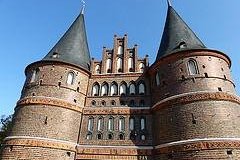
I visited this WHS in October 2014. I spent a night here and explored the sights over 2 days. The main landmark is the Holstentor and there is a twin steepled church and a tower nearby. When walking close the Holstentor you'll immediately notice that it is leaning and also somewhat subsiding too. Still it is well kept and the red brick details worth viewing in sunny weather conditions. In the morning the sun shines on the rear facade of the Holstentor and on the nearby historic salt storehouses. The old city centre houses beautiful red brick buildings such as the Rathaus, St Jacob Church, the Burgtor which are worth viewing. It's true that there are quite a lot of urban constructions but I still loved what Lubeck had to offer. The Café Niederegger is worth visiting even if only to see the marzipan heritage sites inside. Behind the Café Niederegger, there was an Oktoberfest celebration with delicious Bratwurst and beers being served so I joined in gladly. I really enjoyed Lubeck and I must say that it is also one of my favourite WHS in Germany.
Keep reading 0 comments
I was born in Luebeck many years ago. I visit on the internet now and then.Luebeck was bombed during the war and had no choice but to rebuild. A lot of the old building were no longer standing. Of course if one rebuilds it will look new. I find this aspect so wonderful. Old and new live in harmony. After all it is 2013 and time and technology changes. Hope every one has a wonderful time in Luebeck. Appreciate the "old" and marvel at the new. The town should not be in a time-warp. Have a nice day.
Karin
Keep reading 0 comments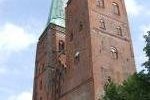
I visited Lubeck after visiting Wismar and Stralsund, and was disappointed at the rampant disregard for its heritage evidenced by all the modern steel and glass construction. Even the majestic Holstentor was not enough to warrant OUV. The interior of the Petrikirche had been destroyed by being painted white, while that of the Dom had been modernised quite out of character with its red brick exterior.
Keep reading 0 comments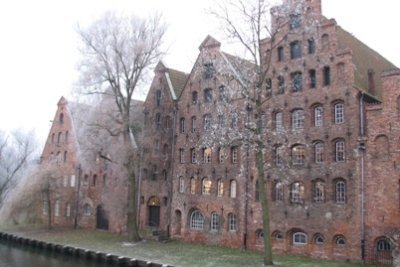
Lübeck was only reluctantly admitted to the World Heritage List. Its nomination was deferred the first time in 1983 because of the loss of authenticity the city suffered from reconstruction after World War II. The ICOMOS advice at the second attempt (in 1987) also holds more warnings than admiring words. The site is also similar to the nearby Hanseatic cities of Stralsund & Wismar, and a serial nomination was recommended.
I visited Lübeck on a very cold Saturday in December. The picturesque Holstentor is the gate to the city center, with the salt storehouses right next to it. The gate now houses the municipal museum, where one can see what Lübeck looked like before WWII.
Wandering around the city's old quarter I'm afraid I have to agree with the skeptic ICOMOS-people: the fabulous remaining monuments are almost hidden from sight by ugly modern constructions, parked cars, cheap shops and eateries and (at this time of year) Christmas stalls. Lübeck's monuments are heavy on a style called "Brick Gothic", originating in countries in which there was a lack of natural stone.
Keep reading 0 comments
As a Hanseatic town Lubeck resembled to me my hometown - Riga. City definitely is attractive, dominated by red brick structures, incredibly high churches.
It seems that World War II and the later prosperity have diminished the charm of this town, but it is worth the visit anyway.
Keep reading 0 comments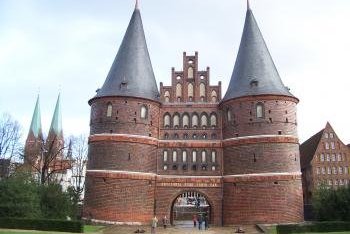
I visited Lübeck to celebrate the New Year 2006/7 and had a really lovely time. It was great to see in the New Year on the banks of the river with fireworks going off all around us. I also have a real love for red brick buildings and cobbled streets so I was very much in my element here.
The most famous Building is the Holstentor (picture) and this is a great way to enter the city, it is quite noticeably leaning. It used to be on the 50DM note, and can now be found on a limited run of €2 coins. The Historic Centre of the city is situated on an island behind the gate. There are a fair few large churches in the centre; Marienkirche (twin spires in the left of picture) was the most impressive. It was huge inside, much larger than I thought it would be. We were very lucky to be able to attend a special Sylvester Concert of Handel’s Messiah inside on New Years Eve, which was a real treat.
There are a lot of areas with lovely red brick buildings all through the centre, but it is also quiet spoiled by some very poor town planning in the 1950/60’s especially on the Altermarkt. The once open square has been enclosed by some really unnecessary buildings, which on the south side seem to be offensively bland. However the newer developments can’t hide the undoubted charm of the city.
Not to be missed is Café …
Keep reading 0 comments
